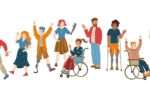Computer-Assisted Translation
When you need to communicate with customers or employees who are not fully proficient in English, it’s important that the translation is not just accurate, but consistent. One way that the best language companies accomplish this is through the use of computer-assisted translation, or CAT tools. Let’s review what CAT tools are and what they do, how they are used, why it matters, and what to look for to make sure your language company is giving you the best service.
What Are Computer-Assisted Translation Tools?
First, let’s talk about what computer-assisted translation tools are not. CAT tools are not like Google Translate which converts text from one language to another. Instead, a CAT tool is a computer software that makes it easier for a highly qualified translator to produce translations that remain consistent from document to document. The human is providing all of the expertise; the software is making it easier to ensure consistency throughout your content.
One way CAT tools do this is by creating Translation Memories. These are databases of previously translated material in which the information from both the source and target language is stored as translation units. These phrases, sentences and even whole paragraphs that have been used in previous documents are kept in the database, and the software will provide it to the translator working on a new document.
For example, imagine a company has translated a brochure for a certain type of work truck into Spanish for their Latin American markets. The truck uses safety features which are also used on several other cars and trucks they offer. When a translator works on the materials for those vehicles, they can draw from the Translation Memory of the work truck brochure for those sections instead of retranslating them.
How Does It Help You?
When your language company uses CAT tools, all your documents remain consistent, which is important for communication and brand image. This is especially crucial when several translation teams work on your content, or are needed for the same translation project. There are often many acceptable ways to translate a phrase or sentence. For example, one translator may use baseball cap but another translator may use baseball hat. CAT tools help to ensure the same translation is used throughout your translated materials.
CAT tools also help by decreasing turnaround times. By applying the Translation Memory to a new translation project, the translator will not have to repeat work which was performed on a previous document. This allows you to receive translations more quickly, and at a lower cost.
What Should You Look For?
To be sure you get the most out of your translation projects there are two main things to consider in light of CAT tools:
First, inquire as to what software they use, and make sure it’s a system that’s highly regarded. For example, we at SWITS use SDL Trados.
Second, make sure that highly skilled translators are using the software. Just because someone on your team is bilingual does not mean they will produce high quality translations. We’ve all heard the term “garbage in, garbage out” when it comes to computers, and it’s crucial to choose a language company that has a high standard for translators and interpreters.
In the U.S., the translation industry is not regulated and it can be difficult to determine who is qualified to translate. One organization that has been highly regarded and accepted as an authority in determining translator qualifications is the American Translators Association (ATA). In recent years, several universities in the U.S. have developed Translation Studies programs as well. Ask your language company what their minimum requirements are for translators.
A few upfront questions about translator qualifications and the use of CAT tools will give you plenty of peace of mind about your investment.





